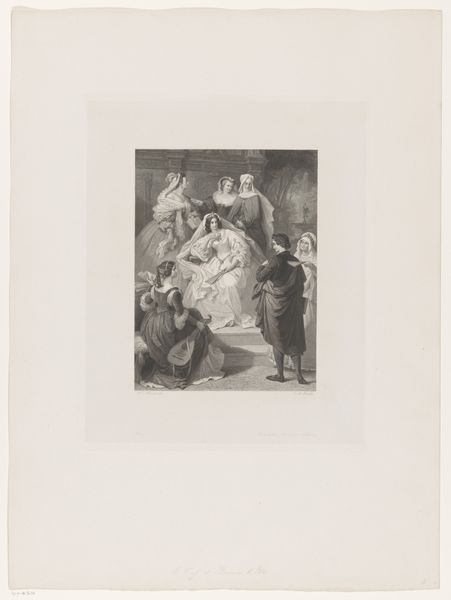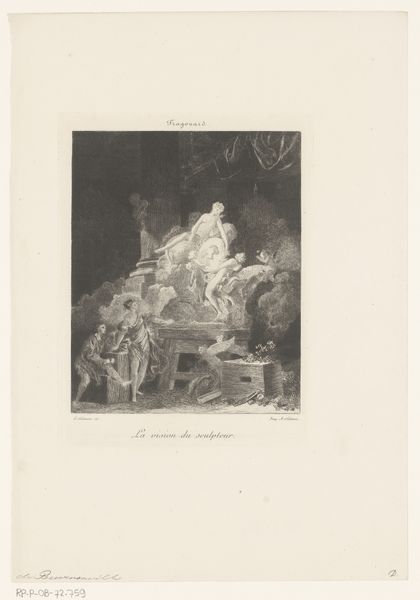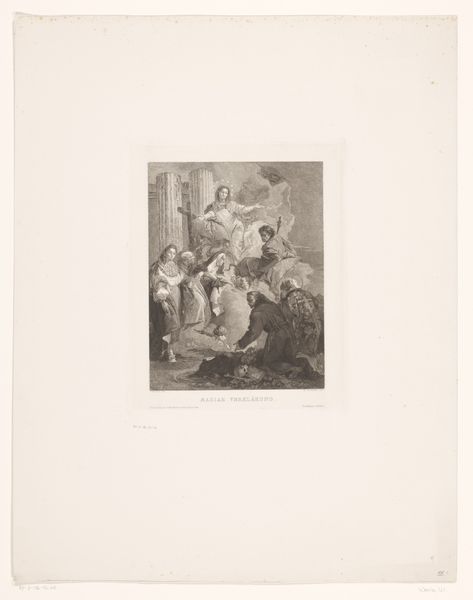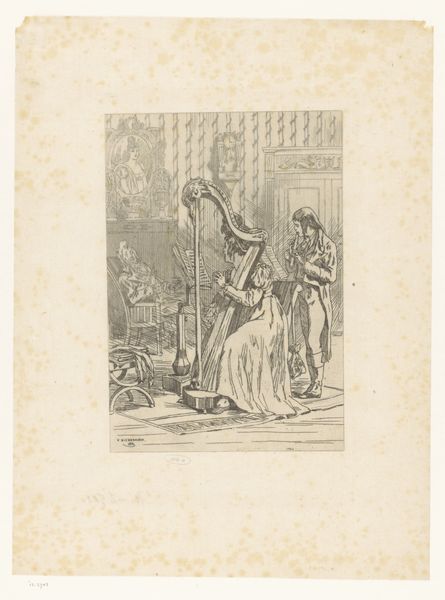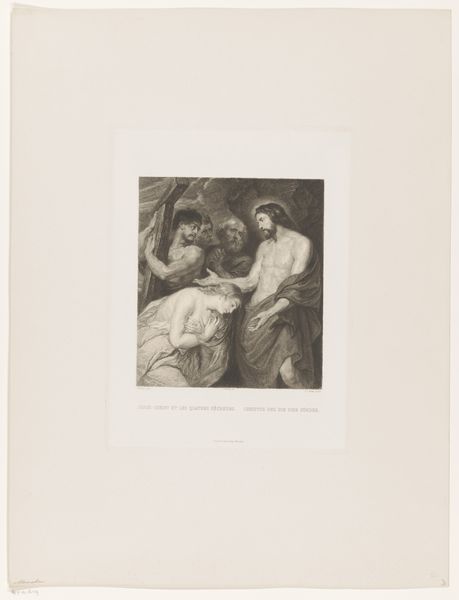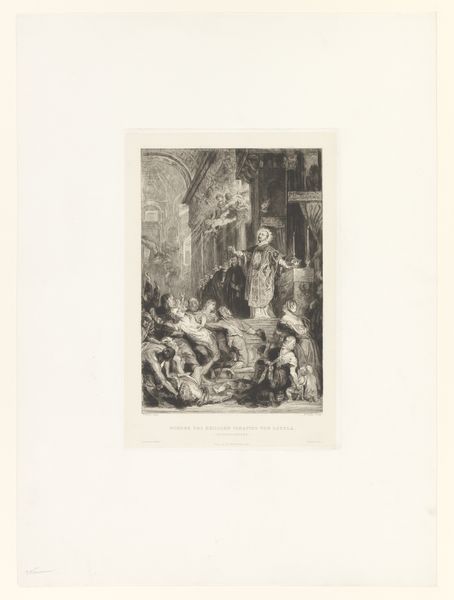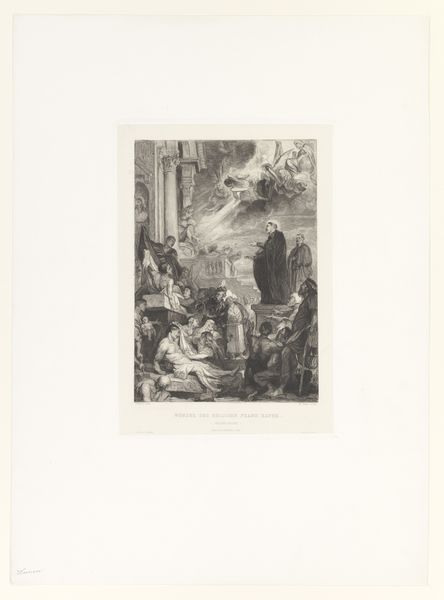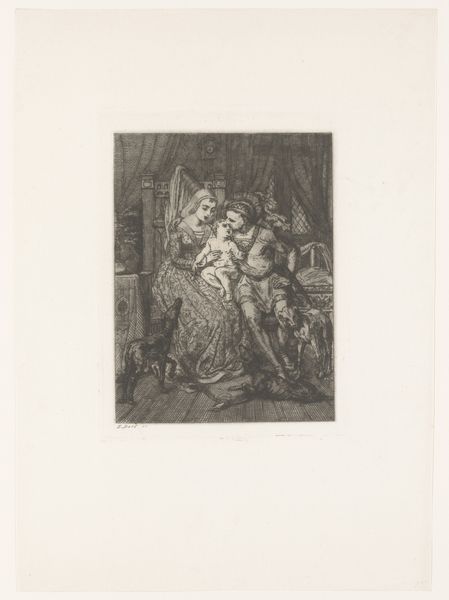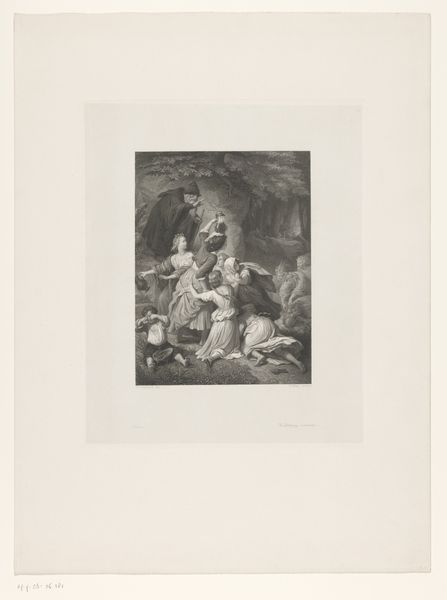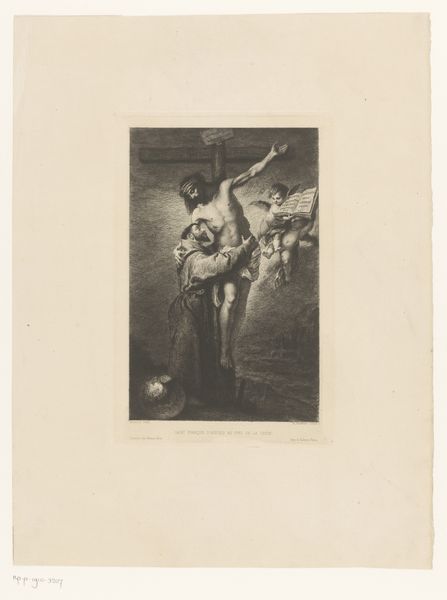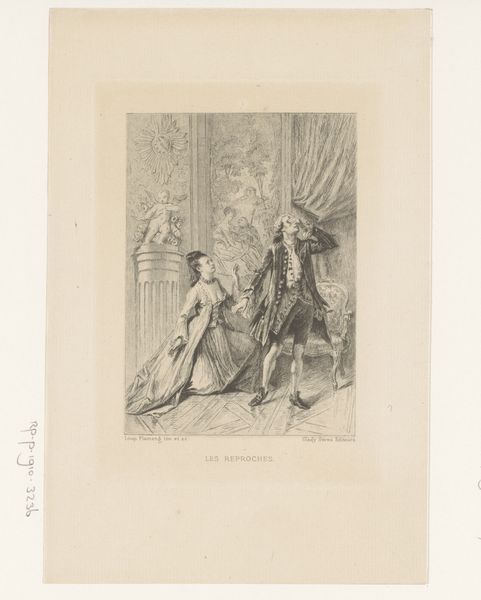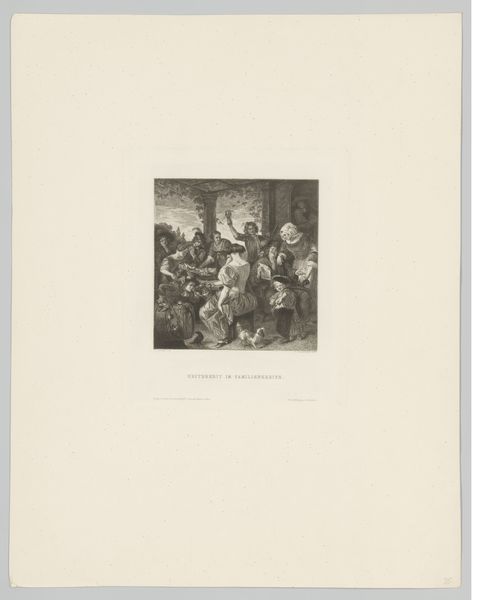
Dimensions: height 439 mm, width 379 mm
Copyright: Rijks Museum: Open Domain
This is Conrad Geyer’s interpretation of Clärchen from Goethe’s Egmont, rendered through a printmaking technique. The process begins with an artist creating an image on a matrix, in this case likely a metal plate. This is achieved through laborious engraving or etching. The image’s appearance is profoundly influenced by this method. The stark contrast and fine lines are characteristic of printmaking. The texture of the paper, its weight and absorbency, all play a role in how the ink adheres and the image is presented. The process requires specialized tools, a deep understanding of materials, and a trained hand. Printmaking also has significant social implications. It allowed for the mass production of images, making art more accessible and fueling the spread of ideas. It's a process deeply connected to labor, politics, and consumption. By understanding the material and making of this print, we recognize the skilled traditions at play and challenge the conventional divide between craft and fine art.
Comments
No comments
Be the first to comment and join the conversation on the ultimate creative platform.
